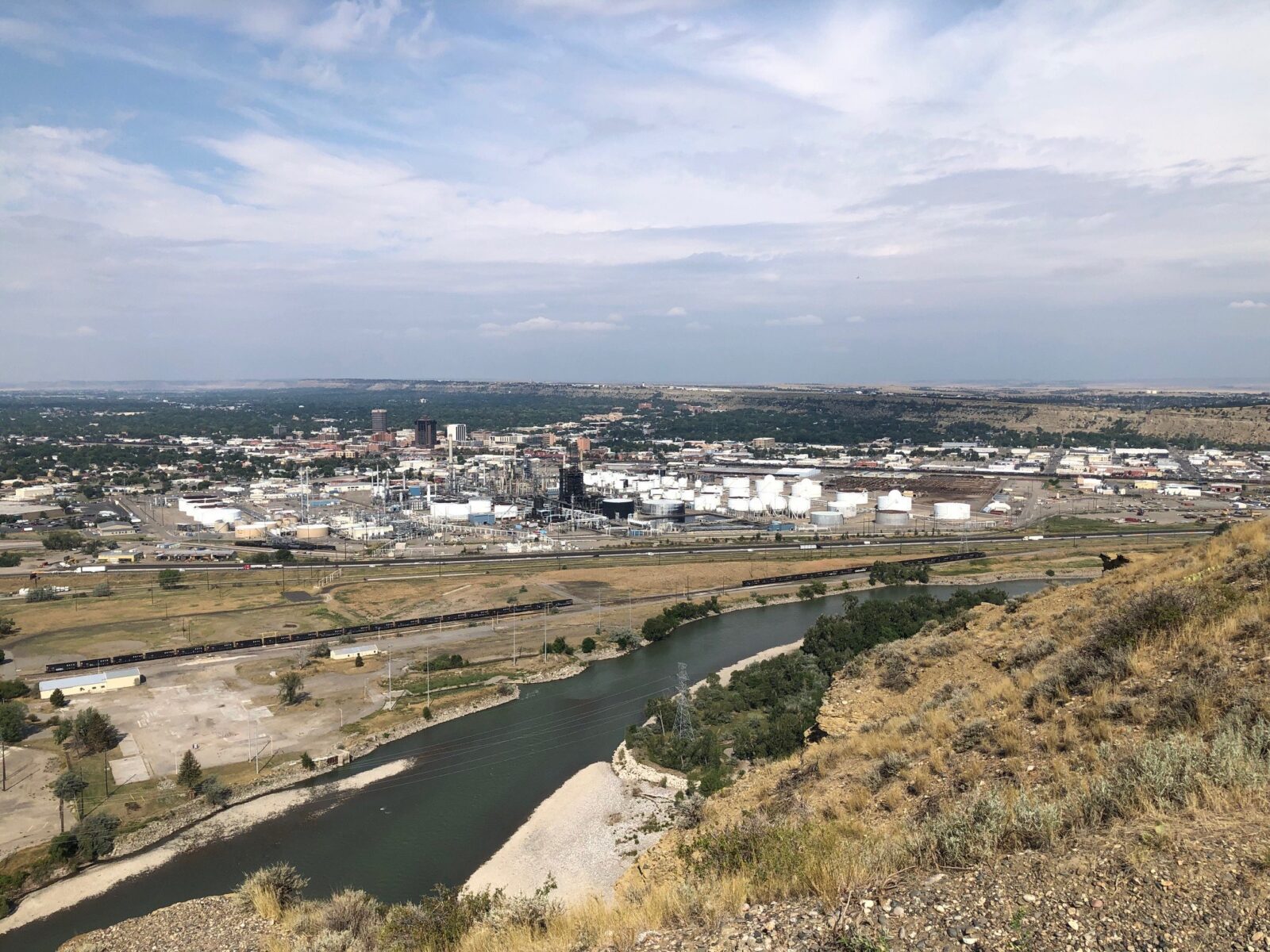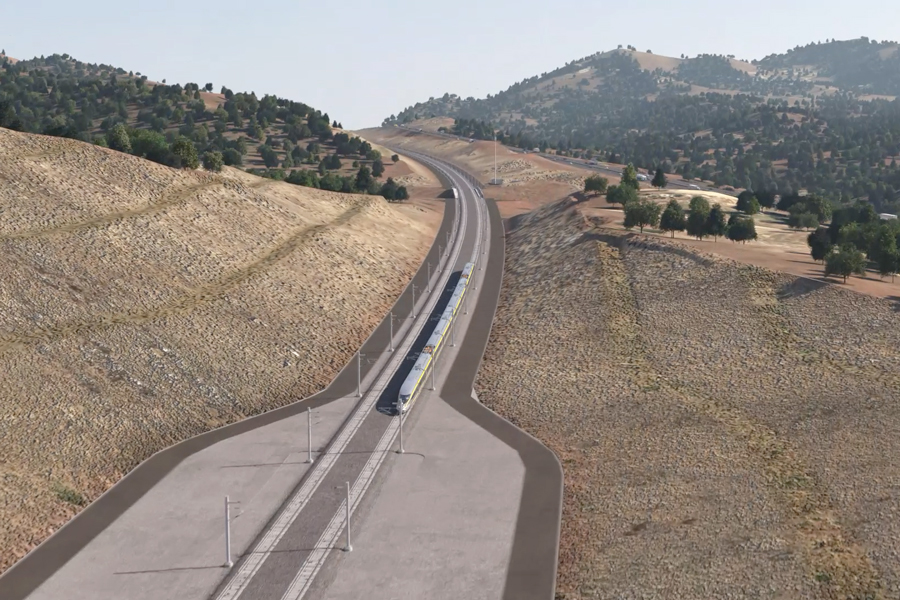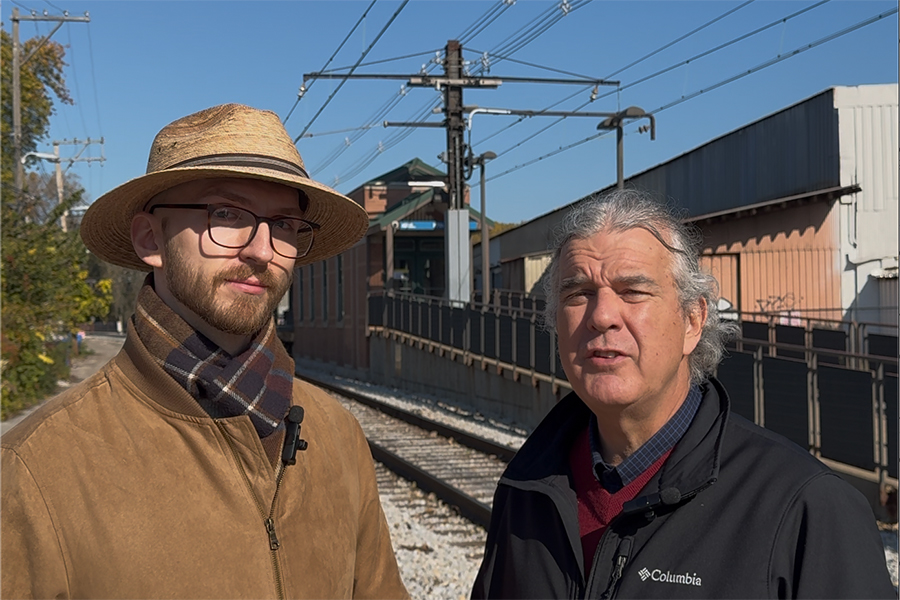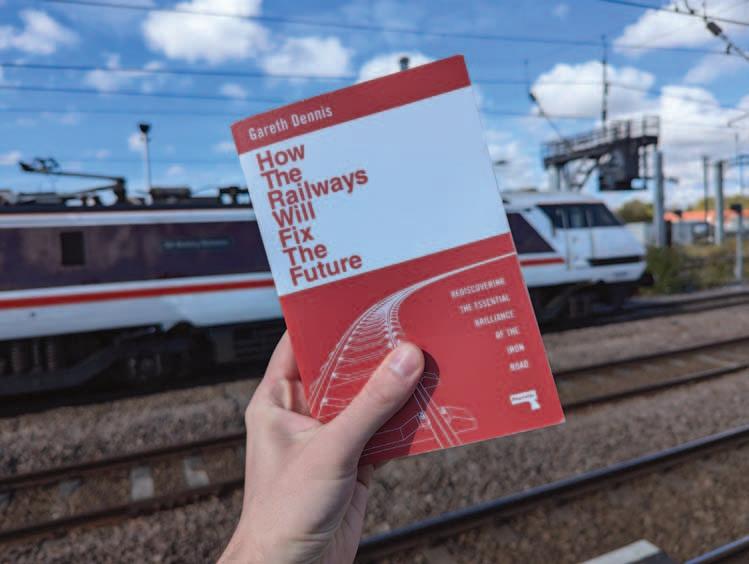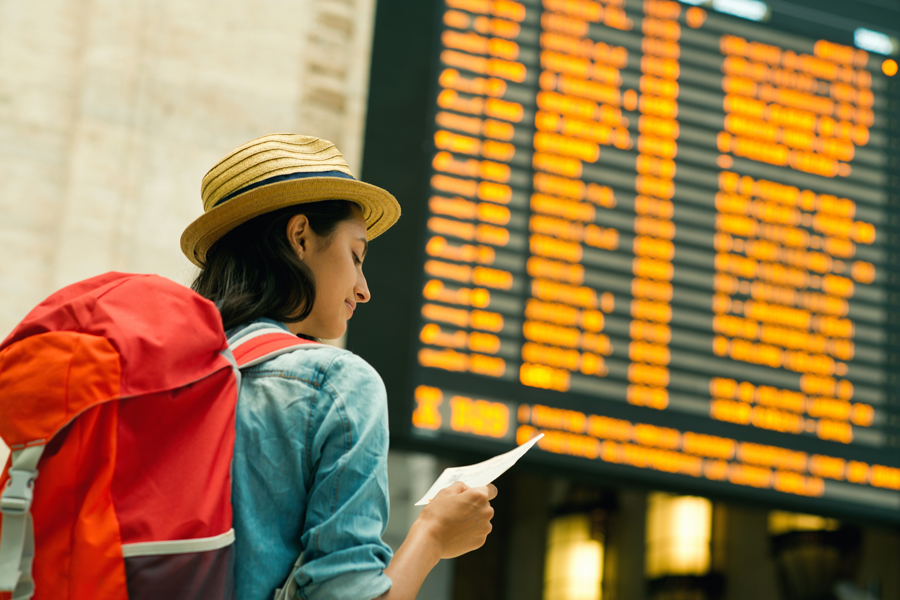More Amtrak equipment, California tunnels, Corridor ID on the list The movement to develop a great train network in the United States made undeniable gains in 2025: Illinois passed transit legislation worth $1.5 billion a year, which not only will continue to fund...
In a 2012 report, we noted that trains “connect congested urban areas and bring economically viable mobility to rural areas and small towns, many of which are becoming more isolated from major cities as regional airline and intercity bus service disappears.” Long-distance routes are, we argued, “the foundation of the national passenger train network.”
A decade later, those observations are truer than ever. America’s rural areas have grown even more disconnected from urban centers. Yet the power of long-distance trains to connect the nation and build the economies of small and mid-sized communities is still under-appreciated.
Fortunately, that may be changing. One good sign is a conference I attended and presented at this week in Billings, Montana, devoted to bringing back a passenger-rail route between Seattle and Chicago. Unlike Amtrak’s Empire Builder—which runs through northern Montana and North Dakota, en route from Seattle to Chicago—the proposed line would run through the southern parts of those states. Amtrak discontinued the last passenger-rail line to do so, the North Coast Hiawatha, in the late 1970s.
The Big Sky Passenger Rail Authority—the group that advocates for the line, and organized the conference—boasts an impressive group of members. They include at least 18 counties that the proposed line will run through as well as the Montana Department of Transportation, Amtrak, the Burlington Northern-Santa Fe Railway, and three Montana Indian reservations.
Many details are uncertain. The exact route it will take is still unclear. And it’s not even certain how the service will be provided. Amtrak will “likely” be the operator, as the Authority puts it. But “there is room for creativity in terms of public-private partnerships.”
What’s clear is that there’s a strong case for a train through running through the southern half of Montana, which is home to several of the state’s biggest towns—including Billings (pop. ~110,000) Bozeman (~48,000), and Butte (~35,000). Missoula, with a population of nearly 75,000, is in the central-western part of the state and is not served by the Empire Builder.
Cars are the only way to get around for people in these towns—and in dozens of nearby communities, as well as hundreds of similar communities across America. The big challenge in changing the status quo, of course, is that many policymakers under-value the role that trains play in empowering people to get from big cities to mid-sized cities and small towns, or from small town to small town.
Yet that’s exactly how many people use them, especially in more rural states.
Our 2012 report makes this point well, using data from Amtrak’s Los Angeles to Chicago line. Fewer than 10 percent of riders took the train all the way from endpoint to endpoint, we reported. About 64 percent took the train from one big city to an intermediate point, while 28 percent traveled between intermediate cities.
Put another way: trips on the line from Chicago to L.A. were about evenly divided between long, medium, and short journeys A third were over 1,000 miles, a third were between 500 and 1,000 miles, and a third were under 500 miles.
People use trains for all kinds of reasons and all kinds of trips, in short. They are “multi-purpose mobility machines,” as our report put it.
Moving the Needle Nationally
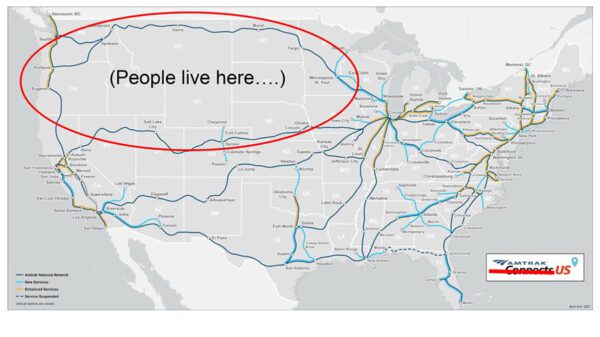 There is a huge gap in our national rail network out West.
There is a huge gap in our national rail network out West.
This initiative is especially exciting because the Big Sky Passenger Rail Authority understands that the line will be a key part of a big-picture national program. They’re clear that it isn’t just about how it will improve travel for the communities located near it between Chicago and Seattle. It’s also about how it will improve travel across America by integrating with—and filling a gap in—the nation’s overall railroad network.
And they take into account a key factor that’s too often overlooked by advocates for better passenger trains: How to create strong, mutually beneficial relationships between the operator and the freight railroads.
These are foundational elements for a vital and sustainable railroad network. By prioritizing both, the Big Sky project is advancing the cause of better passenger trains nationally.
No Better Time Than the Present
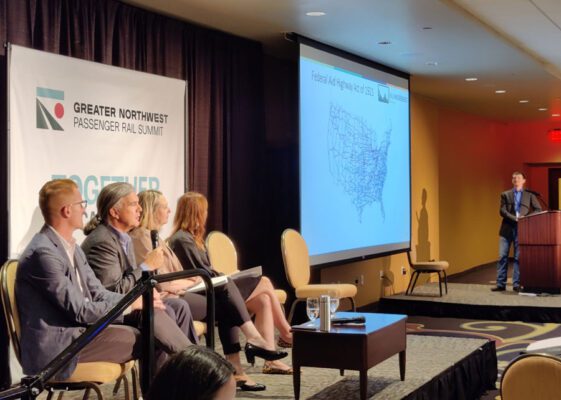 Our executive director Rick Harnish participated in a panel on “Passenger/Freight Rail Synchronicity” at the Greater Northwest Passenger Rail Summit.
Our executive director Rick Harnish participated in a panel on “Passenger/Freight Rail Synchronicity” at the Greater Northwest Passenger Rail Summit.The next step is for the Federal Railroad Administration to conduct a study and report is results. Last year, Congress appropriated $15 million for the FRA to study the restoration of transcontinental passenger-train routes. (Sen. Jon Tester of Montana was one of the key actors in securing the funding.) That study, which launched this week, will likely be completed in 2024.
Meanwhile, a study published last September of the restored North Coast Hiawatha line found that—as a daily Amtrak service with 47 stops across seven states—it would have an annual ridership of up to 426,000 passengers. Roughly 29,000 of those riders “would not otherwise travel at all using any travel mode if the train did not exist.” The study also found that the line would generate $271 million annually in economic benefits for the seven relevant states—Washington, Idaho, Montana, North Dakota, Minnesota, Wisconsin, and Illinois.
In our 2012 report, we made an observation that seems especially prescient right now: “As congestion and the price of oil make driving and flying more difficult and less affordable,” we wrote, “the need to make trains a more widely available mobility choice grows increasingly urgent.”
With high oil prices driving up gas prices and overall inflation, and the dangers on our roads increasing, this is a great time to get back to basics.
Passenger rail has been a safe, reliable, and affordable means of transportation for millions of Americans—both rural and urban—for a long time. No other transportation mode rivals its power to connect communities. Here’s hoping that Montana’s push for better train service will put us on a better path forward by underscoring the vital contributions they make to communities of all kinds and all sizes—all across the nation.
The Latest from HSRA
Our Latest Blog Posts
Check out the latest news, updates, and high speed rail insights from our blog!
